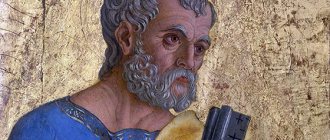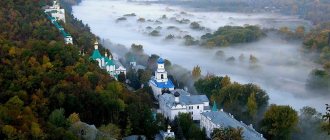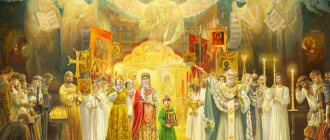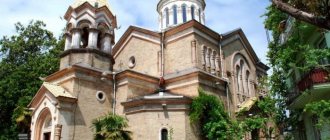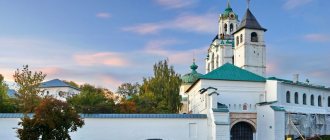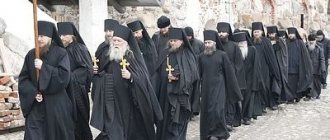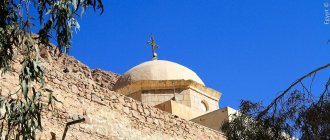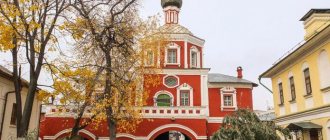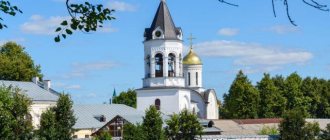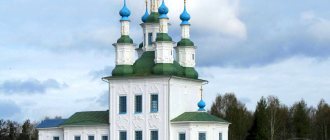Mir
Israel Jerusalem District Jerusalem Gornensky Monastery Map loading in progress...
{"format":"leaflet","minzoom":false,"maxzoom":false,"limit":50,"offset":0,"link":"all","sort":[""], "order":[],"headers":"show","mainlabel":"","intro":"","outro":"","searchlabel":"\u2026 \u0441\u043b\u0435\ u0434\u0443\u044e\u0449\u0438\u0435 \u0440\u0435\u0437\u0443\u043b\u044c\u0442\u0430\u0442\u044b","default":"","import-annotation":false,"width ":"auto","height":"350px","centre":{"text":"","title":"""link":"""lat":31.763722000000001344233169220387935638427734375,"lon": 35.1576390000000031932358979247510433197021484375,"icon":""},"title":"","label":"","icon":"","lines":[],"polygons":[],"circles":[ ],"rectangles":[],"copycoords":false,"static":false,"zoom":8,"defzoom":14,"layers":["OpenStreetMap"],"image layers":[] ,"overlays":[],"resizable":false,"fullscreen":true,"scrollwheelzoom":true,"cluster":false,"clustermaxzoom":9,"clusterzoomonclick":true,"clustermaxradius":80, "clusterspiderfy":true,"geojson":"","clicktarget":"","showtitle":true,"hidenamespace":false,"template":"","userparam":"","activeicon": "","pagelabel":false,"ajaxcoordproperty":"","ajaxquery":"","locations":[{"text":"\u003Cb\u003E\u003Ca href=\"/palomnik/%D0% 93%D0%BE%D1%80%D0%BD%D0%B5%D0%BD%D1%81%D0%BA%D0%B8%D0%B9_%D0%BC%D0%BE%D0%BD% D0%B0%D1%81%D1%82%D1%8B%D1%80%D1%8C\» title=\»\u0413\u043e\u0440\u043d\u0435\u043d\u0441\u043a\u0438\u0439\ u043c\u043e\u043d\u0430\u0441\u0442\u044b\u0440\u044c\»\u003E\u0413\u043e\u0440\u043d\u0435\u043d\u0441\u043a\u0438\u0439 \u 043c\u043e\u043d\u0430\ u0441\u0442\u044b\u0440\u044c\u003C/a\u003E\u003C/b\u003E\u003Chr /\u003E\u003Ca href=\"/palomnik/%D0%A1%D0%B2%D0%BE%D0% B9%D1%81%D1%82%D0%B2%D0%BE:%D0%90%D0%BD%D0%BD%D0%BE%D1%82%D0%B0%D1%86%D0%B8 %D1%8F\» title=\»\u0421\u0432\u043e\u0439\u0441\u0442\u0432\u043e:\u0410\u043d\u043d\u043e\u0442\u0430\u0446\u0438\u044f\»\u003E\ u0410\u043d\u043d\u043e\u0442\u0430\u0446\u0438\u044f\u003C/a\u003E: \u043f\u0440\u0430\u0432\u043e\u0441\u043b\u0430\u0432\ u043d\u044b\u0439\u0440 \u0443\u0441\u0441\u043a\u0438\u0439 \u0436\u0435\u043d\u0441\u043a\u0438\u0439 \u043c\u043e\u043d\u0430\u0441\u0442\u044b\ u0440\u044c\u0432\u0432\u0435 \u0434\u0435\u043d\u0438\u0438 \u0420\u0443\u0441\u0441\u043a\u043e\u0439 \u0414\u0443\u0445\u043e\u0432\u043d\u043e\u0439 \u041c\u0438\u0441\u0441\u0438 \u0438 \u0432 \u0418\u0435\u0440\u0443\u0441\u0430\u043b\u0438\u043c\u0435","title":"\u0413\u043e\u0440\u043d\u0435\u043d\u0441\ u043a\u0438\ u0439 \u043c\u043e\u043d\u0430\u0441\u0442\u044b\u0440\u044c","link":"","lat":31.763722000000001344233169220387935638427734375,"lon": 35.1576390000000031932358979247510433197021484375,"icon":""}]" imageLayers":[]}
31.76764; 35.162558
Israel, Jerusalem, Ein Karem
Jerusalem, Jerusalem District
Israel
Gorny
or
Gornensky Kazan Monastery
is an Orthodox Russian convent run by the Russian Spiritual Mission in Jerusalem (Russian Orthodox Church). Located in Ein Karem, 7 km southwest of the Old City of Jerusalem.
The name Gornensky is due to the fact that it is located in an area that in Gospel times was called the nagorny (mountain) country, i.e. located on the mountains.
There are about 60 sisters in the monastery.
History[[edit]h2>
Archimandrite Anthony (Kapustin)
In 1869, the head of the Russian Spiritual Mission, Archimandrite Antonin (Kapustin), decided to buy a plot with two houses and an olive tree plantation 7 km away. southwest of the Old City of Jerusalem near the village of Ein Karem, which is traditionally considered the birthplace of John the Baptist and the Meeting of the Virgin Mary with the righteous Elizabeth (Luke 1:39-56). The owner of the plot, former dragoman of the French consulate in Jerusalem, Hanna Jelyad, asked for 4,000 Napoleons (80 thousand francs or about 25 thousand silver rubles) for it. A special committee was created in Russia to collect this amount.
Immediately after the purchase of the site in 1871, individual nuns and pilgrims settled on it. The first monastery church was consecrated on February 14, 1883 in honor of the Kazan Icon of the Mother of God. Today this is the main temple of the monastery; the miraculous Kazan Icon of the Mother of God is kept in it. To the right of the entrance to the Kazan Church there is a moved shrine - the stone on which, according to legend, John the Baptist preached. This stone was brought to the monastery from the outskirts of Jerusalem, not far from the so-called “desert” of St. John the Baptist, near the modern village of Even-Sapir.
The community of nuns received the status of a monastery from the Holy Synod in 1898, and in 1903, icon-painting and gold-embroidery workshops were opened in the monastery, from which the monastery fed itself.
In 1910, construction began on the cathedral, which was supposed to be consecrated in honor of the Holy Trinity. It stopped due to the outbreak of the First World War.
By 1914, there were about 200 nuns in the monastery, who, at the request of the Ottoman authorities, had to leave the monastery and move to Alexandria, from where they returned in 1918 to a thoroughly damaged monastery. However, through the efforts of the sisters, it was restored.
Due to the impossibility of communication with the Moscow Patriarchate, the monastery, like the entire Russian spiritual mission, became subordinate to the Russian Orthodox Church Outside of Russia in 1920. In 1924, the Gornensky community again received the canonical status of a monastery.
Many of the nuns who came to the monastery during these years were Russian emigrant nuns who fled to Bessarabia, from there to Serbia, and then to the Holy Land. Only a few novices were Arab women.
In 1945, after the visit of His Holiness Patriarch Alexy I to the Holy Land, a division arose among the sisters of the monastery on the issue of jurisdiction; most supporters of the transition to the jurisdiction of the Moscow Patriarchate appeared. Then the Patriarchate of Jerusalem placed the Greek temple in Ein Karem at the disposal of these sisters.
During the Arab-Israeli War, when the bombing of Ein Karem began in July 1948, the sisters left the monastery and fled to the Jordanian part of Palestine.
After the formation of the State of Israel in 1948, the monastery (as well as the buildings of the Russian Ecclesiastical Mission) was transferred by the Israeli authorities to the Moscow Patriarchate. The nuns, who did not want to return to the jurisdiction of the Moscow Patriarchate, moved to England, where they founded the Annunciation Monastery in London. Five nuns moved to Chile, where in 1958 the Assumption Monastery was founded by Archbishop Leonty.
From the mid-1950s, the monastery began to be replenished with nuns coming from the USSR. It continued to remain one of the operating monasteries of the Russian Orthodox Church throughout the subsequent history of the USSR, being the only convent of the Moscow Patriarchate outside the Soviet borders.
In 1987, the cave temple was consecrated in honor of St. John the Baptist.
In 1997, construction of the cathedral in honor of the Holy Trinity was resumed and completed in 2007 for the 160th anniversary of the monastery. On October 28, 2007, the temple was consecrated with a small rite in honor of All Saints who have shone in the Russian land, and on November 12, 2012, Patriarch Kirill of Moscow performed the great consecration of this temple.
Holy Land. Part 5. Mountainous country. Gornensky Monastery
Gornensky Monastery is located on the outskirts of Jerusalem, near the village of Ein Karem. The site was acquired by Archimandrite Antonin Kapustin, head of the RDM, well known to any pilgrim, at the end of the 19th century.
This area is truly mountainous, which gave its name to both the monastery and the “mountain country”, where her relative, the Blessed Virgin Mary, came to Elizabeth, immediately after the Annunciation, from distant Nazareth.
“In the days of Herod, king of Judah, there was a priest from the order of Abius, whose name was Zechariah, and his wife from the family of Aaron, whose name was Elizabeth. Both of them were righteous before God, walking according to all the commandments and statutes of the Lord blamelessly. They had no children, for Elizabeth was barren, and both were already advanced in years.
One day, when he was serving before God in the order of his turn, by lot, as was usual with priests, he had the opportunity to enter the temple of the Lord for incense, and the whole multitude of people were praying outside during the incense - then the Angel of the Lord appeared to him, standing on his right side of the altar of incense. Zechariah, seeing him, was embarrassed, and fear attacked him. The angel said to him: Do not be afraid, Zechariah, for your prayer has been heard, and your wife Elizabeth will bear you a son, and you will call his name John; and you will have joy and gladness, and many will rejoice at his birth, for he will be great before the Lord; He will not drink wine or strong drink, and will be filled with the Holy Spirit from his mother’s womb; and he will turn many of the children of Israel to the Lord their God; and he will go before Him in the spirit and power of Elijah, to restore the hearts of the fathers to the children, and to the disobedient to the minds of the righteous, to present to the Lord a prepared people.
And Zechariah said to the angel: By what will I know this? for I am old, and my wife is advanced in years. The angel answered him: I am Gabriel, who stands before God, and was sent to speak with you and bring this good news to you; and behold, you will remain silent and will not be able to speak until the day this happens, because you did not believe my words, which will come true in due time.
Meanwhile, the people were waiting for Zechariah and were amazed that he was delaying in the temple. He, having gone out, could not speak to them; and they understood that he had seen a vision in the temple; and he communicated with them by signs, and remained mute. And when his days of service were ended, he returned to his home.
After these days, Elizabeth his wife conceived, and hid herself for five months and said: Thus did the Lord do for me in these days, in which he looked upon me, to remove from me the reproach of men.” (Luke 1:5-25)
Monastery of St. John the Baptist on the site of the house of St. Zechariah and
Elizabeth built in the 17th century by the Franciscans.
Inside the temple there is a cave revered as the birthplace of John the Baptist.
The temple was built on the remains of an earlier Byzantine basilica.
Hegumen Daniel, who visited the Holy Land in 1104-1107, writes: “John the Baptist was born in the same house. Nowadays a church has been built on this site. At the entrance to the church, on the left side, under the small altar, there is a small cave, in this cave John the Baptist was born. This place is fenced with a stone wall.”
The plan of the Church of the Nativity of John the Baptist (from the Franciscans in the Holy Land website) corresponds to the description of Abbot Daniel.
Next to the Russian Gornensky Monastery there is another Catholic monastery called the “Monastery of the Visitation,” located on the site of the summer home of the parents of John the Baptist. It was here that the Most Pure Virgin came to her relative immediately after the Annunciation.
The Church of the Visitation of the Blessed Virgin Mary is a Catholic church located next to the Gornensky Monastery, belonging to the Custody of the Holy Land of the Franciscan Order.
This is how this visit is described in the Gospel: “And Mary arose in those days, and went with haste into the hill country, to the city of Judah, and entered the house of Zechariah, and greeted Elizabeth. When Elizabeth heard Mary's greeting, the baby in her womb leaped; and Elizabeth was filled with the Holy Spirit, and cried with a loud voice, and said: Blessed are You among women, and blessed is the fruit of Your womb! And where does it come from for me that the Mother of my Lord came to me?
For when the voice of Your greeting reached my ears, the baby leaped joyfully in my womb. And blessed is she who believed, because what was spoken to her by the Lord will be fulfilled.
And Mary said: My soul magnifies the Lord, and My spirit rejoices in God My Savior, because He has respected the lowliness of His Servant, for from now on all generations will bless Me; that the Mighty One has done great things for Me, and holy is His name; and His mercy throughout all generations is upon those who fear Him; He showed the strength of His arm; He scattered the proud in the thoughts of their hearts; He has cast down the mighty from their thrones and exalted the humble; He filled the hungry with good things, and sent away the rich with nothing; He received His servant Israel, remembering mercy, as He spoke to our fathers, toward Abraham and his seed forever.
Mary stayed with her for about three months and returned to her home. The time came for Elizabeth to give birth, and she gave birth to a son.” (Luke 1:39-57)
While still in his mother’s womb, John the Baptist was already a prophet and announced to her the approach of the Mother of God. No wonder Jesus Chrysos said about him: “Of those born of women, there is not a single prophet greater than John the Baptist” (Luke 7:28)
Officially, the birthplace of John the Baptist is called Ein Karem, and is located on the outskirts of Jerusalem. According to the “mountainous country” in Russian sources, the village was called Gornaya, which gave the name to the Russian Gornensky convent.
Archimandrite Antonin Kapustin
The founding of a Russian monastery in Gorny is associated with the name of Archimandrite Antonin (Kapustin), who led the Russian Spiritual Mission (RDM) in Jerusalem for almost 30 years (1865-1894). Archimandrite Cyprian (Kern) tells about the history of this acquisition in the book “Archimandrite Antonin Kapustin - Head of the Russian Ecclesiastical Mission in Jerusalem,” published in Belgrade in 1934:
“Our largest property, 9 kilometers from Jerusalem near the Arab village of Ein Karem, where another Russian female monastic community now flaunts, went to Fr. Antoninus, not without some competition and struggle with the Latin missionaries.
Among the rather high hills, along the slopes planted with olives, fig trees and slender, tall cypress trees, there are now several monastic communities: our Russian and three Latin ones. It was not without difficulty that we managed to establish a firm footing here. The fact is that Ein Karem chose as a base for his activities the Latin missionary so famous in the East, the baptized Jew Ratisbonne, the founder of the congregation of the Sisters of Zion. Then the Ein-Karem valley, inhabited only by Arabs, saw Roman newcomers for the first time. Thanks to organization and material resources, Catholic missionaries quickly buy up plots of land from Arab inhabitants, build their own chapel, a school for children, a monastery in honor of the Nativity of the Baptist, surround it with a stone fence, plant it, and decorate it. For the first time, also, the hills of Ein Karem were announced with a new and alien name “Magnificat”. Ratisbonne's gaze was directed to the hill on the eastern side of the valley, in order to annex it to the Catholic possessions. But then the keen eye and energy of the Russian missionary suddenly put a limit to the lusts of the Latins. Ratisbonne traded on that hill, which belonged to the former. dragoman of the French consulate to the Catholic Arab K... a house for the needs of his Zion sisters. But the Arab asked, quite unexpectedly, for the entire plot, and not just for one house, the amount of 200,000 francs. Ratisbonne retreated, and then the Arab, being angry with him, offered the Russian Mission to buy his property for only... 70,000 francs. The negotiations were, of course, conducted secretly, and the deal was completed in the greatest secrecy. Finally, the necessary act of ownership was in the hands of Fr. Antonina. Ein Karem Hill, the place of the meeting of the Mother of God with the righteous Elizabeth, one of the most precious, according to the Gospel memories, places became Russian, was christened with the name “Gornaya”, sweet to the Russian ear, but the next day the Arab dragoman was found poisoned in his house. Popular rumor persistently accuses Catholic fanaticism here.
To this property Fr. The archimandrite gradually bought a number of neighboring plots and thus rounded it out into one large and valuable estate with a total area of 228,776.90 square meters. meters.
The area was huge. The modern Hadassah clinic is located on the territory once purchased by Fr. Antonin, and transferred to Israel during the time of Khrushchev.
Back in 1870, it was a wasteland with lonely houses. After 10 years, a new Russian educational work began on it. Now it is a convent with an excellent structure, economy and is completely different in its structure and style from ordinary monasteries. “Gornaya” is the brainchild of Fr. Antonina, whom he loved with special love, and it is worth telling more about him. He had carried the thought of her in his heart for a long time.
When creating and equipping Gornaya Island. Antonin, wishing to avoid overcrowding, made full use of the vastness of his new possession in Ein Karem. The main principle was to settle the future nuns throughout the mountain, carving out a plot for each to build cells on it and the necessary garden for it. These plots were given to the nuns for life-long use, with even the builders having the right to transfer them to another person for life-long use, after which the house and the entire estate became the full property of the Mission. The taste and desire of the hermits regarding the construction and decoration of their cells were not limited and were not constrained by any regulations that could give a stereotyped appearance to the entire community. Individuality was not killed, and this is what gave Gorney that exceptionally attractive flavor, breathing simplicity and cheerfulness. These clean, small houses are scattered all over the hill, like beehives in an apiary, drowning in the greenery of cypresses, fig trees and almond trees, flowers and miniature vegetable gardens.
On the territory of the Gornensky Monastery
Until his death, Fr. Antonina, his spirit and the covenants given to Gorny did not fade away and were alive. The community was directly subordinate to the Head of the Mission, there were no abbess or any official superiors; the nuns lived out their lives in their houses, uniting only in the church and the common refectory. Then the conditions changed significantly: they began to strive to expand the monastery, houses and still empty plots began to be sold less selectively, thanks to this access was opened to random elements, from the sale itself or lifelong lease a profitable item was formed for the Mission, they wanted to convert the Gornaya at any cost to a “real” monastery, before the war they especially strived for this. The Synod then approved the Olivet Monastery, they introduced “elder sisters” both there and in Gornaya, granted them pectoral crosses, and in 1924 they asked Patriarch Damian for the right to call them “abbesses,” which all together was, however, very much in the spirit of our common behavior in Palestine in the last years before the war. We certainly wanted, contrary to all the canons, to have our own hierarchy parallel to the Greek one, our own small diocesan administration.
Houses of the nuns of the Gornensky Monastery
Now in Gornaya, in addition to the church, bell tower and chapel, there are over 50 small sister houses, immersed in the greenery of the hill and unusually pleasing to the eye with their picturesqueness. The Upper Garden is truly a huge garden, as material as it is spiritual, and in this it has fully preserved the idea of its founder. In this monastery there are now up to 120 sisters, spiritually nourished by Mother Abbess Tabitha.
Father Archimandrite never tired of taking care of his brainchild, constantly showed his fatherly love for him and often came to his beloved Gornaya on his gray donkey. With considerable difficulty, he managed to obtain permission from the patriarch to consecrate the temple in Gornaya - this was a period of such strained relations with the patriarchs Hierotheos and Nicodemus; Finally, the Metropolitan of Petra of Arabia, the elderly Nicephorus, consecrated the small but very prayerful temple of the Kazan Mother of God (celebrated on October 22). Then Fr. Antonin asked the Synod to establish a special holiday of "Kissing", usually celebrated on March 30, if the Annunciation does not fall on Holy Days (otherwise the holiday is transferred to Thursday of Holy Week).
Icon “Kissing” in the Kazan Church of the Gornensky Monastery
From the Mission from Jerusalem there is a procession of the cross with the icon of the Annunciation to Gornaya, to which a procession of the cross comes from Gornaya with the icon of the Kissing of the Mother of God with the righteous Elizabeth. The Icon of the Annunciation, in memory of the three-month stay of the Mother of God as a guest of the righteous Zechariah and Elizabeth, remains in Gornaya until June 24, until the day of the Nativity of the Baptist, when it returns again to the Mission in Jerusalem. Father Antonin also wrote the service for this Feast of the Kiss, intertwined with the wondrous and full of mysterious meaning service for the post-celebration of the Annunciation. This holiday was established by the Synod and is celebrated with deliberate tenderness from year to year, attracting a huge number of people, both from among Russian pilgrims and especially Abyssinians. Finally, on January 19, 1886, Fr. Antonin also gave special rules to the Gornensky community, which were supposed to regulate the life of this semi-monastic monastery.
But still, despite the form introduced into the Mountain Organization and the desire to constantly increase the number of nuns, it retained the spirit of its founder. The mood of simplicity and sincere religious feeling that he imbued from the very first day of the life of this Russian corner is alive and, I want to believe, will not die, and maybe, God willing, someday he will help to recreate again and develop what Fr. wanted to see in it. Antonin. Gornaya remembers him and transmits his memory to posterity.”
Monument to Fr. Antonin Kapustin in the Gornensky Monastery
The first temple built by Antonin Kapustin in the Gornensky Monastery was consecrated in the name of the Kazan Icon of the Mother of God. For a long time it remained the only temple of the monastery.
From pilgrimage impressions of 2016: “The Kazan temple is small, cozy, and filled with prayer. In it we read an excerpt from the Gospel of Luke and venerated icons and relics of saints.”
A stone is mounted at the entrance to the Kazan Church
On this stone, according to legend, the prophet John the Baptist preached his first sermon to the people.
Father Antonin asked the Synod for permission to establish a special holiday of Kissing in memory of the meeting of the Mother of God with righteous Elizabeth. This holiday was established by the Synod and has been celebrated every year since then, usually five days after the Annunciation. On this day, from the Mission in Jerusalem there is a procession of the cross with the icon of the Annunciation to Gornaya, and a procession of the cross with the icon of the Kissing of the Mother of God with the righteous Elizabeth comes out from Gornaya. The Icon of the Annunciation, in memory of the three-month stay of the Mother of God as a guest of the righteous Zechariah and Elizabeth, remains in the Gornaya until June 24 according to the old style - the day of the Nativity of John the Baptist, when she returns again to the Mission at the Russian Compound in Jerusalem. During these three months, the Queen of Heaven Herself rules the monastery; the icon is placed in the church on the site of the abbess of the monastery; the abbess hands her her staff; sisters, coming to a service, first approach the icon, and only then approach the abbess for a blessing.
Church of the Holy Trinity. year 2009
In 1910, a more spacious church in the name of the Life-Giving Trinity was founded in the monastery. However, the temple was not completed then due to the outbreak of World War I, and stood unfinished for almost 90 years. Only in 1997, when the 150th anniversary of the RDM was celebrated, Patriarch Alexy II visited the monastery, and a blessing was received for the completion of the temple. On October 28, 2007, the temple was consecrated with a small rite in honor of All Saints who have shone in the Russian land, and on November 12, 2012, Patriarch Kirill of Moscow performed the great consecration of this temple.
Church of the Holy Trinity. 2016
Gornensky Monastery is the largest Russian monastery in the Holy Land. The plot acquired by Archimandrite Antonin Kapustin in 1871 was very large, but Khrushchev sold a significant part of it to Israel for a very small amount. An ultra-modern oncology center was built on this site, where patients from all over the world come for treatment.
From impressions of the 2009 pilgrimage: “Russian groups are greeted at the Gornensky Monastery like family. We constantly felt warmth and care. The resident of the monastery, Mother Silouana, lovingly told about the life of the monastery, its traditions and way of life.
At the monastery cemetery, she showed us the grave of sisters Veronica and Varvara, mother and daughter, brutally killed by a maniac in 1983 in their own cells.”
For a blessing to the schema-nice
The sisters of the Gornensky Monastery, replacing each other, carry out obediences in many areas of the RSM in the Holy Land.
From pilgrimage impressions of 2016: “Our guide was nun Larisa from the Gornensky Monastery. This was something completely different from a trip with a secular guide, albeit an excellent historian, but an unchurched person. Mother Larisa talked about holy places and events not so much from a historical and factual point of view, but from a spiritual point of view, and this is exactly what pilgrims need in the first place!”
Not far from the Gornensky Monastery, in the valley, there is a source from which the Blessed Virgin carried water during the three months She spent in Elizabeth’s house.
The sisters of the Gornensky Monastery take water from it; pilgrims also happily drink it and wash themselves. Many of us picked up carob fruits along the way, the same ones that the prodigal son dreamed of satisfying himself with, and after washing in the spring, we decided to try it. The pods turned out to be sweet in taste, and the seeds-stones were hard as stone.
Carob tree with fruits
Let me remind you of a fragment from the parable of the Prodigal Son: “After a few days, the younger son, having gathered everything, went to a far side and there squandered his property, living dissolutely. When he had lived through everything, a great famine arose in that country, and he began to be in need; and he went and accosted one of the inhabitants of that country, and he sent him to his fields to graze pigs; and he was glad to fill his belly with the horns that the pigs ate, but no one gave it to him. When he came to his senses, he said, “How many of my father’s hired servants have an abundance of bread, but I am dying of hunger; I will get up and go to my father and say to him: Father! I have sinned against heaven and before you and am no longer worthy to be called your son; accept me as one of your hired servants." (Luke 15:13-19)
From the pilgrimage impressions of 2009: “From Mother Silouana we heard another interesting story - about the Venerable David of Gareji, who lived in the 6th century, one of the founders of Georgian monasticism. The Monk David, together with his disciple Lucian, set off on foot to the Holy Land. In those days, such a journey was a very dangerous undertaking: the road was blocked by robbers and wild animals that attacked travelers in deserted places, villains and murderers hiding in forests and caves, heretics and pagans who hated the Orthodox as their enemies. Pilgrims usually walked in large caravans, accompanied by warriors. But the monks walked alone, so as not to disturb the silence and heartfelt prayer. They walked with their eyes downcast, without looking around, covering their faces with a monastic doll. The whole path was for them spiritual steps, a staircase along which in ancient times pilgrims, singing psalms, climbed to the Temple of Jerusalem. The monks ascended the mountain. Below lay Jerusalem, the city that was destined to become the spiritual capital of the world. Here Christ was crucified as the Son of man, here he was resurrected as the Son of God.
The Venerable David of Gareji is depicted on an icon near the walls of Jerusalem with a stone in his hand
The Monk David let Lucian go to venerate the Holy Sepulcher and go around the shrines of Jerusalem, but he himself never entered the Holy City, considering himself unworthy. Returning, the Monk Lucian found his teacher standing in the same place, immersed in prayer. According to the custom of pilgrims taking a handful of the land of Palestine, the monk picked up three stones from the ground and hurried on the way back. At night, Patriarch Elijah of Jerusalem had a dream that a monk from Georgia took all the grace of Jerusalem and took it with him. The Patriarch, waking up, sent walkers to catch up with David and ask what happened. David replied that he did not enter the city and took nothing except three stones. Then the Patriarch's envoys took 2 stones back, and left the third one to the monk, who brought it to the Gareji monastery. This stone is kept in the monastery to this day; There is a legend in Georgia that three visits to the Gareji desert are equal to a pilgrimage to Jerusalem.”
Jerusalem is located to the east (to the right in the photo).
On the mountain where the Monk David prayed, there is the tomb of the prophet Samuel; the top of this mountain is clearly visible from the site of the Gornensky Monastery. This mountain is also called the Mount of Joy, from here the pilgrim can take a farewell look at Jerusalem. Hegumen Daniel calls it Mount Armafem: “Near Jerusalem, on the right side on the way from Yafa, there is a high mountain, which is called Armafem. On this mountain is the tomb of the prophet Samuel, and his father Elkan, and Mary of Egypt; there was a village and a house of saints. This place is fenced and is called the city of Armafem."
On the horizon - “Mountain of Joy”
Read more ""
Holy Land. Table of contents:
Hebron. Mamre oak; Haifa and Mount Carmel; house of Joachim and Anna. Place of the Nativity of the Virgin Mary; Nazareth; Gornensky Monastery; Ein Karem. Cave of John the Baptist; Bethlehem; Field of the Shepherds; Jordan; Jericho. Mount of Temptations; Cana of Galilee; Lake of Gennesaret. Capernaum; fish of the Apostle Peter; Magdala and the Mount of Beatitudes; Mount Tabor and the Jezreel Valley; water in Jerusalem. Cisterns, fonts and baths; Bethany. Tomb of Lazarus; Upper room of the Last Supper. Gethsemane; Gethsemane. Monastery of Mary Magdalene; Way of the Cross of the Savior; threshold of the Judgment Gate; Golgotha and the Holy Sepulcher; history of the Church of the Holy Sepulcher; structure of the Church of the Holy Sepulcher; Mount of Olives - the place of the Ascension of the Lord; Jaffa, Joppa. Sermon of the Apostle Peter; Dormition of the Mother of God. Gethsemane Tomb; Lydda. Church of St. George the Victorious; Lavra of Saint Sava the Consecrated. Lavra of Theodosius the Great. Monastery of Gerasim of Jordan.
Temples[[edit]h2>- Cathedral of All Saints who shone forth in the Russian Land
- Church of the Kazan Icon of the Mother of God
- Church of John the Baptist
- Cathedral of All Saints who shone in the Russian land
. In 1910, a spacious church in the name of the Life-Giving Trinity was founded in the monastery. However, the temple was not completed then due to the outbreak of World War I in 1914, when RDM employees were forced to leave Jerusalem and go to Cairo. The cathedral stood unfinished for almost 90 years. Only in 1997, when the 150th anniversary of the RDM was celebrated, Patriarch Alexy II visited the monastery, and a blessing was received for the completion of the temple. To date, construction work has almost been completed. The temple was consecrated in the name of All Saints who shone in the Russian land.
- The Church of the Kazan Icon of the Mother of God
was built between 1880 and 1881.
- The Cave Church of John the Baptist
was built no later than 1987.
. In 1910, a spacious church in the name of the Life-Giving Trinity was founded in the monastery. However, the temple was not completed then due to the outbreak of World War I in 1914, when RDM employees were forced to leave Jerusalem and go to Cairo. The cathedral stood unfinished for almost 90 years. Only in 1997, when the 150th anniversary of the RDM was celebrated, Patriarch Alexy II visited the monastery, and a blessing was received for the completion of the temple. To date, construction work has almost been completed. The temple was consecrated in the name of All Saints who shone in the Russian land.
was built between 1880 and 1881.
was built no later than 1987.
Mother George
The chambers of Mother Georgia (before Valentina Shchukina's tonsure) are located in the very heart of the monastery. From its terrace there is a picturesque view of the Jerusalem mountains with monasteries scattered along the slopes. Mother George was appointed abbess of the monastery with the blessing of Patriarch Alexy II and the Holy Synod with the parting words to “restore Gorniy” in 1991. As the Patriarch said then: “For holy obedience, mother, the Lord will help! You will stay for three or four years, restore the monastery, and begin to receive pilgrims.”
Then, more than 20 years ago, most of the buildings in the monastery were dilapidated, there was no water, no electricity, no sewerage. The novices fetched water down to the source from which, according to legend, the Most Holy Theotokos drank. But, by the grace of God, this holy place was restored from the ashes of oblivion and destruction.
As a child, Mother Georgia survived the siege of Leningrad: “When we were evacuated, at the Orekhovo-Zuevo station, my mother handed me and my younger sister Ninochka over to the morgue as dead. Ninochka remained there, but I survived and spent more than a month in the hospital. The day before discharge, by the will of God, the head physician came with a request from my mother, who was evacuated to the Krasnodar region, am I alive? That's how we reunited. Then the village where we lived was taken by the Germans. We hid from them in the cellar. God preserved, they were not found. I returned to Leningrad in 1944, and in 1949 I went to a monastery in Estonia, where I lived for almost 40 years.”
The restoration of the monastery began in 1992, when 20 seminary students from the Moscow Theological Academy were sent to the monastery. The work went faster with them. They restored the ancient two-story building at the entrance to the monastery, which housed an almshouse. Now it is a hotel. A few years later, about 20 novices arrived at the monastery, and work with them began to boil. Sometimes sisters get sick and it can be difficult to cope with everything. But mother does not lose heart: “workers” often come to help the monastery.
“Workers” are people who want to devote a certain period of their lives to serving God. They come for up to three months, as long as a tourist visa allows, live in the monastery and help in its everyday life. Each of them is assigned tasks based on their skills.
The workers are not burdened by the monastery's regulations, they have their own daily routine: at 7:00 - breakfast, after breakfast - work to which they are assigned by the dean (a sister who performs administrative duties), then lunch, an hour of rest and again work until the evening. After dinner at 18:00 - free time. Sometimes there is an evening service, which everyone attends on holidays and Sundays.
The monastery is also visited by many pilgrims. So, one day a group of priests came from Russia and during the visit they were warned: they say that sometimes you can meet scorpions on the territory of the monastery and in case of a bite you must definitely drink arak. To which the priests joked: why wait for a scorpion bite? 
Patronal holidays[[edit]h2>
Special holiday of the monastery
At the request of Archimandrite Antonin (Kapustin), the Holy Synod of the Russian Orthodox Church, by decree of August 5, 1883, blessed the celebration of the holiday in the Gornensky Monastery - “Kissing of Mariino, or the Coming of the Mother of God to the Gorny City of Judah”
, usually performed on April 12 (March 30 according to the old style). This is due to the fact that the monastery is located a few tens of meters from the place where, according to legend, the Meeting of the Virgin Mary with Righteous Elizabeth took place (the Franciscan Church of the Visitation is currently located on that site).
Since then, on the eve of the Feast of the Kissing, the icon of the Annunciation of the Blessed Virgin Mary is transported from the Holy Trinity Cathedral in Jerusalem to the Gornensky Monastery, where it remains for three months until the Feast of the Nativity of John the Baptist on July 7 (June 24, O.S.), because The Mother of God was here with Elizabeth for 3 months. This icon is placed on the abbot's place in a blue robe like a monastic robe, placing the abbot's staff next to it. During these three months, the Most Holy Theotokos herself is the abbess of the monastery.
There is no such celebration in the general church calendar of the Russian Orthodox Church.
Abbesses
Big sisters
- Rachel (1898)
- Valentina (1898 - 1918)
- Tabitha (Minina) (1918 - 1924)
Mother Superiors
- Tabitha (Minina) (1924 - 1945)
- Elisaveta (Annenkova) (1945 - ?)
- Antonina (Grishko) (1945 - ?)
- Afanasia (Lysenkova) (1950 - 1955)
- Mikhail (Korchagin) (1956 - 1960)
- Tabitha (Dmitruk) (1960 - April 19, 1967)
- Sophronia (Rebriy) (April 19, 1967 - December 28, 1982)
- Feodora (Pylipchuk) (November 23, 1983 - 1986)
- Ekaterina (Sorokina), acting dean
- Elena (Loshkareva), acting dean
- Gabriela (Glukhova) (1989 - 1990), acting dean
Where to stay[[edit]h2>- Pilgrimage houses of the Gornensky Monastery
Pilgrims arriving at the Gornensky Monastery are accommodated in small pilgrimage houses located on the territory of the monastery. Currently, the Gornensky Monastery has 4 pilgrim houses, with a capacity of 10 to 22 people. Settlement in the pilgrimage houses of the Gornensky convent in Jerusalem is carried out through the Pilgrimage Service of the Russian Spiritual Mission.
The pilgrim houses have a kitchen where pilgrims can prepare tea (pilgrims eat in the monastery refectory); shower and toilet are on the floor.
Address:
Israel, Jerusalem, Ein Karem
Directions:
A pilgrim going to the Gornensky Monastery only needs to have a foreign passport and an air ticket for a flight to Ben Gurion Airport. From there, buses, trains and taxis go to Jerusalem; the journey takes about an hour. From the center of Jerusalem (Old City) the monastery in Gorny can be reached by bus routes 19 and 27 (stop “Hadassah Hospital”).
How to visit?
To visit, you must make a pilgrimage to Jerusalem.
Travel documents:
- 1. foreign passport valid for at least six months from the date of travel;
- 2. for those wishing to work in the monastery, a visa is required, for ordinary pilgrims and tourists it is not required;
- 3. Round-trip tickets with “closed” dates;
- 4. Medical insurance for the duration of your stay in the country;
- 5. Hotel reservation or invitation;
- 6. Confirmation of solvency.
A trip to Jerusalem and a visit to holy places for every Christian requires special preparation. And this is not preparing documents, booking hotels or selecting flights. Before a pilgrimage to the Holy Land, it is advisable to renounce earthly worries, confess, and tune in to the perception of the greatest shrines of the Christian world.
In order for the pilgrimage trip to become a true event of the spirit for you, such undoubtedly important, but earthly issues as the organization of transfer, accommodation, meals, and excursion program will be taken care of by Tobiah’s service. With the blessing of the Church of the Nativity of the Blessed Virgin Mary, our pilgrimage center helps to make Orthodox tours to the most important shrines of Russia and the world. Orthodox tour guides will help you understand the spirit and meaning of true Christian pilgrimage, and our experience in organizing trips will make each tour safe and comfortable.
To main
Famine and plague struck the monastery, but the Kazan Mother of God saved the sisters
Even before the revolution, in 1910, one temple was not enough to accommodate believers. Therefore, the construction of the Cathedral of the Life-Giving Trinity began. This time there was already enough territory, so it was possible to choose the most appropriate place.
And one was found. They began to build the cathedral on a hill so that it could be seen from different parts of the city.
But such an initiative was not financially feasible for the monastery. Very quickly the cash reserves were exhausted. This was also influenced by the fact that the number of nuns increased. The nuns had to earn extra money in order to somehow provide themselves with food.
12 akathists
Sisters read the icon of the Kazan Mother of God on the patronal feast day
But the problems weren't over. A plague epidemic broke out in the monastery, from which eight nuns died. The survivors decided to turn to higher powers for help. We began to read the akathist to the Kazan Mother of God.
Suddenly the icon came down from the wall and began to walk around the temple. A voice rang out. He assured that from now on all disasters will stop, and there is no need to worry about the epidemic.
And so it happened. And a new tradition appeared in the monastery - to read the akathist to the Kazan Icon of God twelve times on the patronal feast day.
The site received the status of a monastery and became the property of the Holy All-Russian Synod
This site was given the status of a monastery in 1898, and in 1903 two workshops were opened in the monastery:
- gold embroidery;
- iconographic.
This allowed the monastery to begin to provide for its needs, since before that it was financed by the Orthodox Palestine Society and donations from believers.
Church of the Icon of the Kazan Mother of God
Father Antonin remained the owner of these plots until his death. He bequeathed Palestinian property to the Holy All-Russian Synod.
The only exception was one house, which he transferred to his pet Sofia Konstantinovna, with the condition that, in the end, after the death of her and any other heiress, this property would also pass to the Holy All-Russian Synod.
